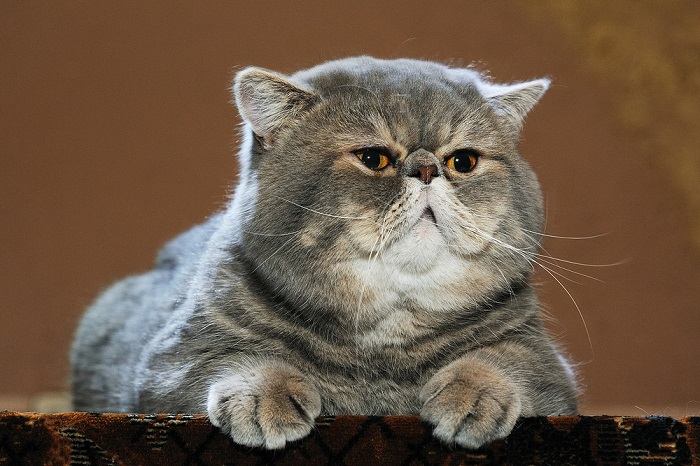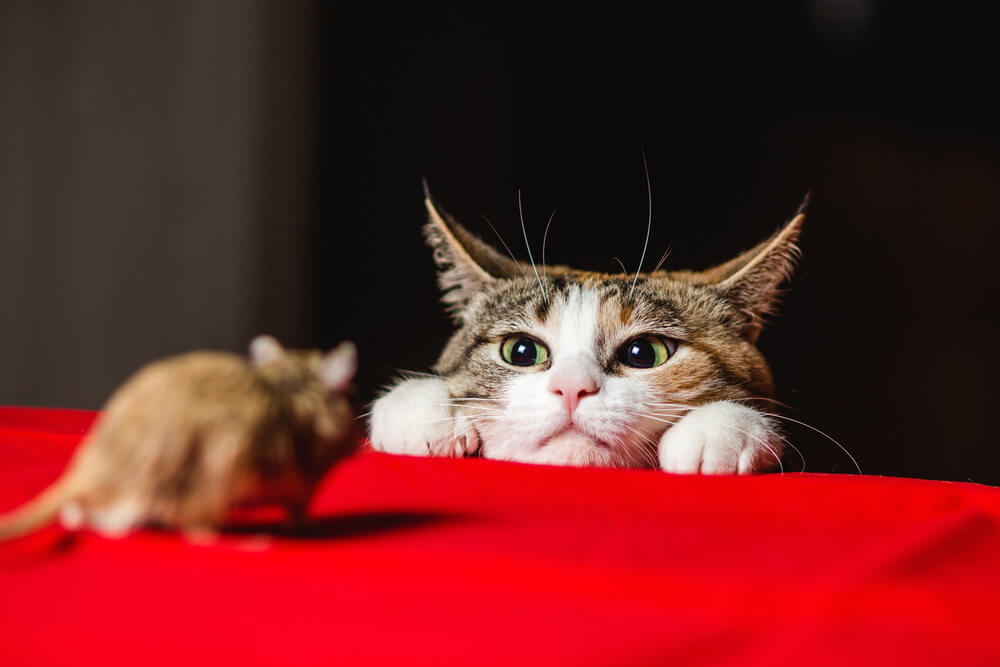
Our cats are a super interesting species. It seems that from the tops of their heads to the tips of their tails, their genetic makeup is a thing of wonder.
They possess incredible senses and physical abilities that are most impressive, and there are a lot of interesting facts to learn about what makes our feline friends so special.
When it comes to cat whiskers, there are actually several interesting facts you may not have known that prove to make these facial decorations so special. Keep reading to discover 10 interesting facts about cat whiskers you may not have known.
1. You Can Judge Your Cat’s Mood by Looking Closely at Their Whiskers

On average, a cat will have approximately 12 whiskers on either side of their face.
Cats are stoic beings who are great at guarding what they think or feel. But, in addition to your cat’s body language, you can also learn more about how your cat is feeling by looking at their whiskers. On average, a cat will have approximately 12 whiskers on either side of their face. Use the following tips to help you judge your cat’s mood…
- Straight and to the side as usual: Calm and relaxed
- Pushed forward: Alert, engaged, and excited
- Flattened against cheeks: Scared, angry, and could be ready to strike (AKA: Watch out!)
2. Cat Whiskers Are Made of Keratin

Similar to your cat’s claw sheaths, their whiskers are also made up of a protein known as keratin.
Similar to your cat’s claw sheaths, their whiskers are also made up of a protein known as keratin. Cats don’t just have whiskers on the sides of their noses either. You can also find whiskers on their forehead and at the bottom of their legs near their paws.
These tactile hairs, which are scientifically known as vibrissae, help your cat to gauge the world around them.
3. You Won’t Hurt Your Cat’s Whiskers if You Touch Them

Remember, your cat’s whiskers are embedded into their skin about three times deeper than their fur, so pulling on them would be a very uncomfortable feeling for your cat.
Cat whiskers are awfully cute. And while we know that we should never, for any reason, trim them, it is safe for us to touch them should we not be able to resist the temptation. Pulling on your cat’s whiskers, however, should be a big no-no as it can cause them pain.
Remember, your cat’s whiskers are embedded into their skin about three times deeper than their fur, so pulling on them would be a very uncomfortable feeling for your cat.
4. Your Cat’s Whiskers Act Like Antennas to Observe the World Around Them

Cats will utilize their whiskers to navigate the world around them.
They say that a cat’s whiskers are so powerful, they have the ability to sense changes in the pressure in the air. And, because of this, your cat can sense when the weather is about to change simply by relaying these air pressure changes from their whiskers to their mighty brains.
Cats will utilize their whiskers to navigate the world around them. To everything from sensing pressure changes in the air, balancing, allowing them to know if they can fit into tight spaces, and even keeping them out of harm’s way.
5. Cat Whiskers Send Messages to Your Cat’s Brain

Your cat’s whiskers are sensitive. And they are equipped with proprioceptors, which are sensory organs.
Your cat’s whiskers are sensitive. And they are equipped with proprioceptors, which are sensory organs. These sensory organs tell your cat’s brain what is going on in the world around them by sending signals to it.
And these proprioceptors are very sensitive, which is why they should never, ever be cut for any reason. Cutting them would be painful to your cat, and would basically feel like someone is cutting the top of your skin.
6. The Bigger the Whiskers, the Bigger the Cat

Cat whiskers grow with a cat. And that’s not just as they mature into adult cats either.
Now, this one isn’t too surprising. But what makes this fact about cat whiskers is that cat whiskers grow with a cat. And that’s not just as they mature into adult cats either. If a cat is channeling their inner Garfield, then those whiskers will begin to grow longer too to accommodate for their bigger width.
7. Your Cat Can Experience Whisker Stress

Your cat shouldn’t have to press their whiskers against a hard surface any time they want to eat or drink.
Your cat’s whiskers are not only sensitive to sound, vibrations, and air pressure but also to touch. And that goes for when things touch their whiskers, as well as their whiskers being forced to rub against things.
With that being said, this is just one of the many reasons why you should always feed your cat out of a wide bowl that can accommodate their whiskers. Your cat shouldn’t have to press their whiskers against a hard surface any time they want to eat or drink. Because, by doing so, this can result in whisker fatigue. (More on that here.)
8. Mother Cats Will Sometimes Chew Their Kittens’ Whiskers

While this would be alarming to see, cat experts say that this interesting behavior is typically considered to be rather normal.
While this would be alarming to see, cat experts say that this interesting behavior is typically considered to be rather normal. Mother cats are the masters of keeping their offspring safe, and it’s been known that they will sometimes go to great lengths to ensure their safety.
One way that mama cats keep their kittens from danger is by chewing their whiskers down a tad. This way, the kitten will be less likely to explore.
9. Cat Whiskers Are One of the Many Reasons Why Your Cat Is Such a Great Hunter

Out of all your cat’s senses, their vision is by far the weakest of their five senses.
Out of all your cat’s senses, their vision is by far the weakest of their five senses. Cats do have the ability to see in low lighting thanks to their genetic makeup, but when it comes to up close objects within ten inches of their face, their vision is quite blurry.
But, this is where they rely on those twitchy whiskers to help them out. A cat’s whiskers will swoop toward their prey just before they strike because their whiskers are helping them to sense just how far away their often very unlucky victim is.
10. Whiskers Help to Protect Your Cat’s Face

Your cat’s whiskers are very impressive. They can sense the smallest changes in their environment and can serve to protect your cat’s delicate eyes from injury.
Your cat’s super sensitive whiskers have the ability to sense even the smallest specks of dust and dander, which can help your cat to proactively approach this by shaking their heads before the harm reaches their eyes.








My little boy trimmed my cat’s Whiskers. They were Uneven!
Oops! I hope it was a good learning experience and your cat feels better now.
It Was a learning Experience for me! My son Looked Guilty and never admitted it to me. He was so lucky that This cat was So Docile! The cat later got hit by a car and didn’t survive.
Thank you for getting back to me! I’m sorry to hear about your loss. Wishing you all the best!